Вы здесь
Mudflow on July 15, 1973 in Maloalmatinskoye Gorge.
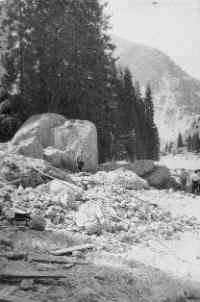
Mudflow in Kazakhstan.
"Without losing faith for a moment,
That he can give a lesson in courage,
Here a basin the size of a lake
Had to absorb the stream.
Leaving the riverbed in anticipation of a mudflow
And completely in the power of this leap,
Bubbling in the bracelet of a strong tunnel
The river retreating to the side."
Zhuban Moldagaliev. "Mudflow". Translated by V. Savelyev.
Mudflow in Zailiyskiy Alatau Mountains.
The mudflow on July 15, 1973 was formed by the breakthrough of the moraine lake Tuyuksu due to hot weather in the highland zone. June that year was cool. In Alma-Ata there were heavy rains, and in the moraine and glacier zone - heavy snow.
In early July, a sharp and steady warming began, intensive melting of snow and glaciers began in the mountains, leading to over-wetting of the upper layer of the moraine. As a result of the unstable state of the moraine, on July 14 in the afternoon, an underground grotto through which water flowed from two lakes occurred.
As a result of the grotto blockage, both lakes began to quickly fill with melt water, and on July 15 at 17 hours 54 minutes they broke through. The breakthrough of the lakes was accompanied by a strong collapse of the moraine strata in the area of the rupture with the formation of large failures and cracks in it, through which the water flow instantly fell down into underground grottoes and filtration channels.
Having filled them, the water flow, under the action of hydraulic pressure, very quickly reappeared on the surface of the moraine in the form of a gushing column, carrying out huge blocks of ice measuring 8-10 meters from the grottoes.
The water flow on the moraine, saturated with sediment and ice fragments, turned into a water-rock mudflow. Moving along the surface of the moraine at a speed of up to 4 m/s, after 9 minutes the mudflow reached the Mynzhilki dam, located in the valley in the upper reaches of the Malaya Almatinka River at an altitude of 3000 meters.
The mudflow reservoir with a volume of 36,000 cubic meters was filled in 3 minutes, after which the dam was destroyed within a few seconds. Below the Mynzhilki dam, the maximum mudflow discharges due to the erosion of the riverbed, slopes and the involvement of sediments, as well as channel and underchannel waters, in the flow along the entire 10-kilometer section to the Medeo dam reached catastrophic proportions: at the Mynzhilki hydropost - 320 cubic meters per second, at the Tuyuk-Su gate - 2,300 cubic meters per second, at the Gorelnik tourist base - 3,200 cubic meters per second, and at the entrance to the Medeo mudflow storage facility - 5,200 cubic meters per second.
The Malaya Almatinka River valley after the mudflow passed turned into a deep canyon. The mudflow from the Mynzhilki dam to the Medeo mudflow storage facility went at a speed of 10 - 12 meters per second. As it moved, the flow moved huge boulders measuring 5-6 meters and weighing up to 300 tons.
With its great dynamic force (over 1,000 tons square meters), it instantly destroyed all the small anti-mudflow structures and buildings in its path, causing many casualties. The flow approached the mudflow storage of the Medeo dam at 18:17 and continued for about 3 hours.
During the passage of the mudflow, 3-4 steep mudflow shafts were noted. The largest was the first shaft, 12-15 meters high and 40-50 meters wide. The water collection structures were immediately clogged with sediment. The mudflow storage was almost completely filled in 3 hours.
After the mudflow passed, only 30% of the free volume remained in the mudflow storage, which was clearly not enough to hold back new catastrophic mudflows. To eliminate the emergency situation, an urgent decision was made to increase the dam by 40 meters and create a new mudflow storage capacity of up to 12.6 million cubic meters.
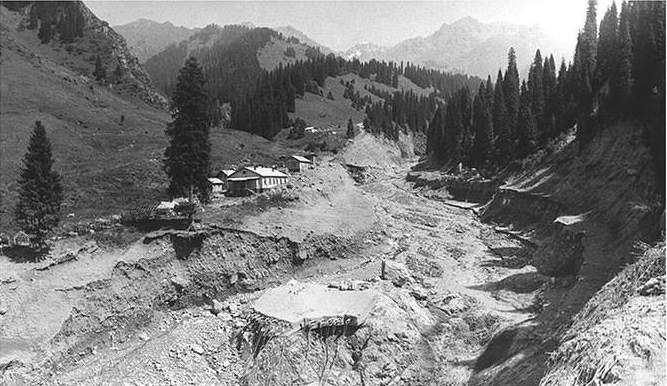
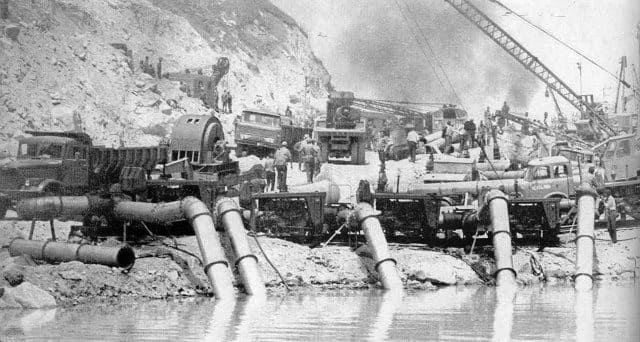


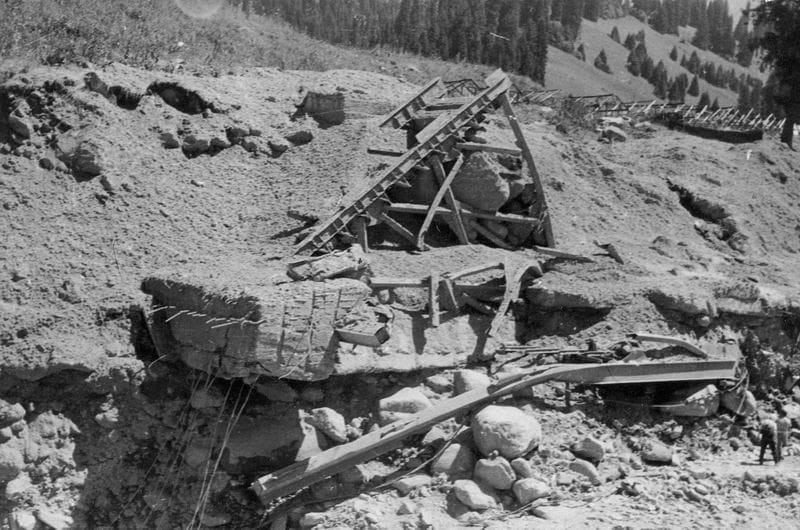
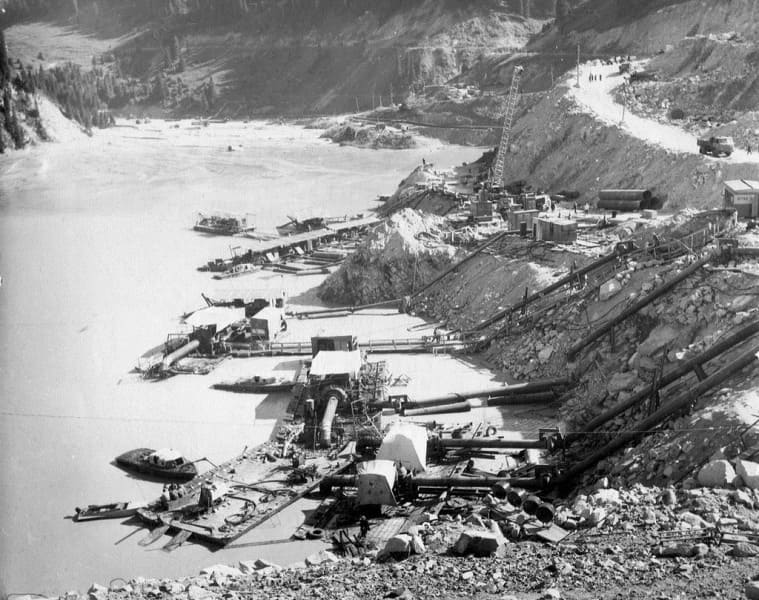
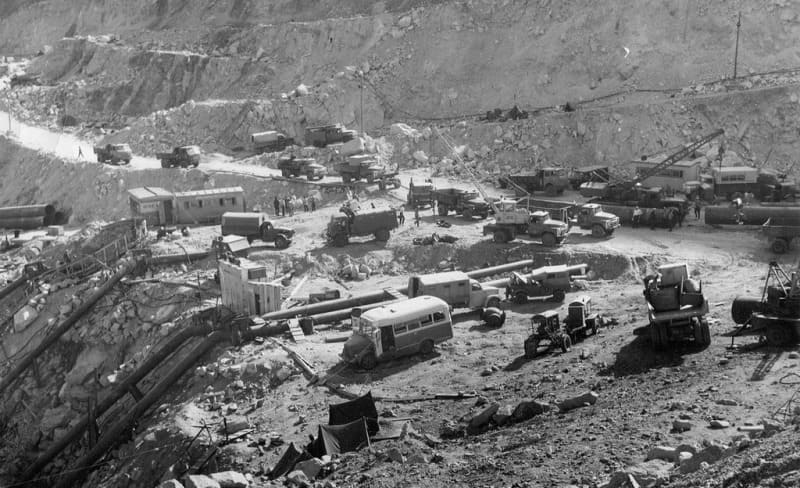
Authority:
Anatoly Degovets, PhD in Geographical Sciences. Continent Magazine, No. 20/33
Photos by:
Vyacheslav Kamorsky.







